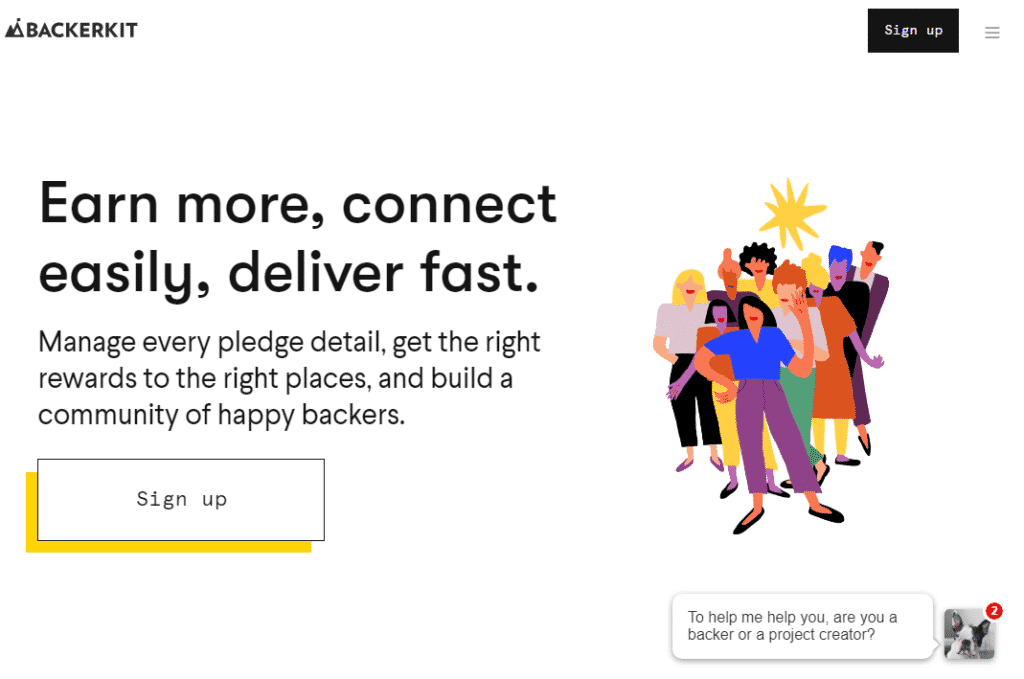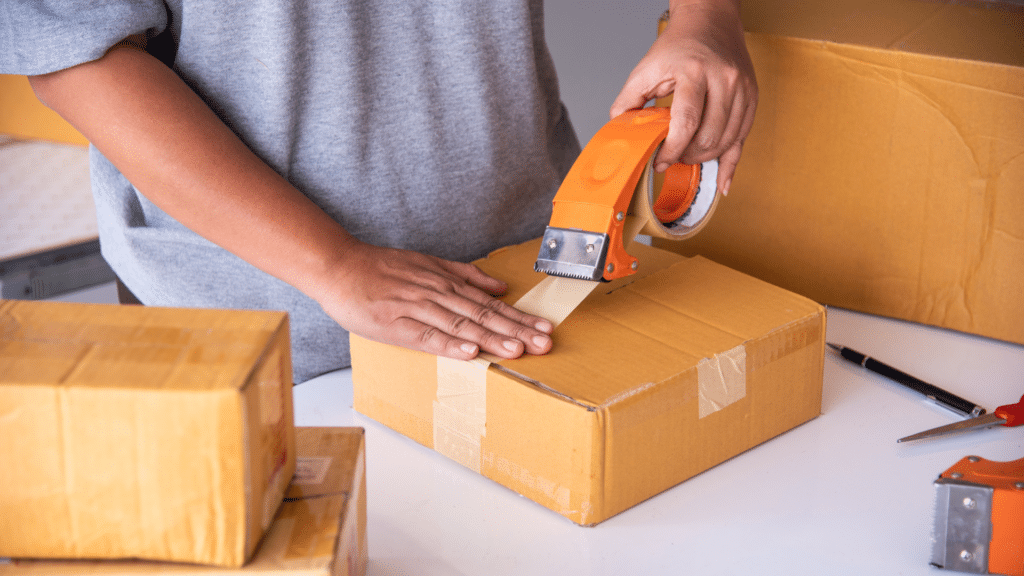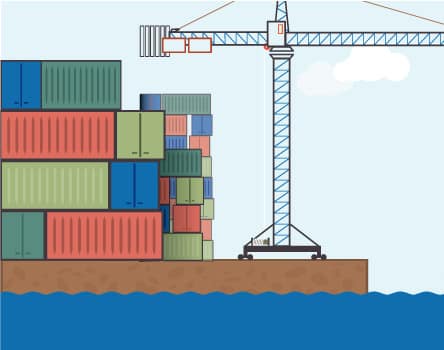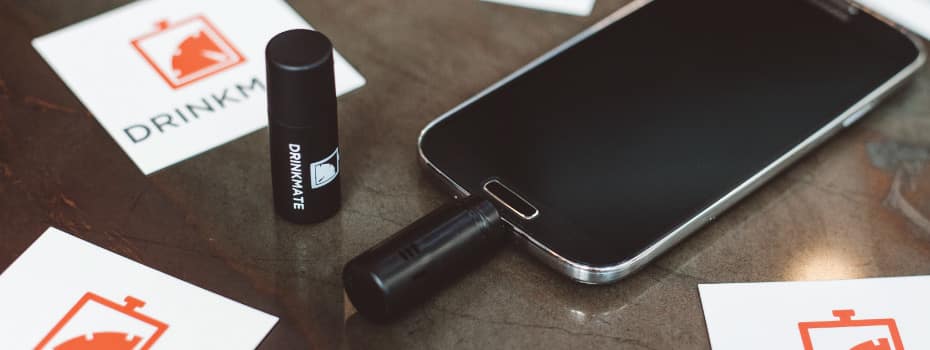You’re going to have to ship at some point.
This is an inevitable part of every Kickstarter campaign. After all the marketing, fundraising, manufacturing, and getting ready for order fulfillment, you need to know where the orders should go.
Figuring out when to collect addresses is surprisingly tricky on Kickstarter. There are four ways you can do it, each with their own pros and cons. They are:
- On Kickstarter shortly after the campaign
- On Kickstarter right before fulfillment
- On a pledge manager shortly after the campaign
- On a pledge manager right before fulfillment
But which one should you choose?
That depends on a couple of factors. The first is how tech-savvy you are, and the second is whether you prefer the risk of not getting addresses on-time or the risk of people forgetting to update their addresses when they move.
We’re going to talk about each option in a minute, but first, there’s one quick thing we need to cover…
A Quick Note on Pledge Managers
Pledge managers are special tools for crowdfunding that add functions that Kickstarter and similar platforms don’t have. Using pledge managers such as BackerKit, PledgeBox, and CrowdOx, allows you to more easily:
- Manage backer data
- Administer surveys (in multiple rounds)
- Handle add-ons
- Allow backers to update their addresses
- Upsell and cross-sell
You can fund successfully with or without a pledge manager. We are pro-pledge manager at Fulfillrite simply because of the ability to send surveys in multiple rounds as well as upsell and cross-sell. But this is one area where reasonable Kickstarter creators can disagree on best practice.

Option 1: Collecting Addresses on Kickstarter Shortly After the Campaign
Kickstarter has built-in survey tools which you can customize by the reward level each backer chose. After your campaign, you can send out surveys to gather any information you need from your backers, which includes address information.
In some ways, this is easier. First, you don’t need to implement additional software. You can simply reach out to people by Kickstarter, which some inexperienced backers will also find easier. Additionally, if you use Kickstarter’s built-in survey platform, you won’t be able to collect funds after the campaign is over, which means you will need to charge shipping upfront. Logistically, this is a negative since shipping prices can fluctuate, but the additional upfront cash is nice.
But here’s the biggest catch – if you’re using Kickstarter’s built-in platform, you can only send out surveys once. If backers fill out the surveys and then move, the only way they can tell you about their updated address is by directly messaging you. Then you have to make sure you update their address in the file you will export from Kickstarter before you hand it over to your fulfillment partner. It’s just a lot of extra manual work.
And if people forget to update their addresses because you collected them early? There’s a good chance that you will end up sending shipments to the wrong place entirely, leaving you to decide whether you’re going to ship another unit out to cover the backer’s mistake.
Additionally, since you’re forced to collect shipping upfront on the Kickstarter platform, Kickstarter will also take a 5% cut of those funds too. Most pledge managers will take a much smaller cut.
Additionally, the long timeframe between surveys and fulfillment may lead some backers to forget to update their addresses, potentially increasing your customer service workload.
Pros
✅ More money upfront since shipping costs are built into Kickstarter pledges
✅ If shipping info collected shortly after the campaign via survey, more people have a chance to fill out the form, which could lead to timelier fulfillment
✅ No extra platforms to manage
Cons
❌ Money collected subject to higher fees
❌ Tough to manage address changes
❌ People might forget to update addresses
Option 2: Collecting Addresses on Kickstarter Right Before Fulfillment
This strategy is very similar to the previous one. You send out surveys and collect address information on Kickstarter. However, in this method, you send the surveys out shortly before you fulfill orders.
Much like the previous option, this involves no extra platforms to manage. Plus, you collect the shipping funds upfront. But, you also pay extra fees on those shipping costs and, again, it’s tough to manage address changes.
However, by sending out surveys shortly before fulfillment, you’ll likely see far fewer address changes. But that comes at the cost of having people not submit their addresses for weeks or months. If you send out surveys months before fulfillment, this is barely an issue. If you send out surveys 2 weeks before fulfillment, someone taking a month to fill out the form can delay your fulfillment processes, leaving your inventory sitting in storage – for a charge – for longer than you’d like.
Pros
✅ More money upfront since shipping costs are built into Kickstarter pledges
✅ No extra platforms to manage
Cons
❌ Money collected subject to higher fees
❌ Tough to manage address changes
❌ Some people won’t submit their addresses for weeks or months, possibly delaying your fulfillment processes

Option 3: Collecting Addresses on a Pledge Manager Shortly After the Campaign
Instead of using Kickstarter’s built-in survey platform, you can use a pledge manager such as BackerKit to gather backer addresses and any other information you need. This has a number of benefits, among them being that you will benefit from lower fees on shipping charges, the ability to send multiple surveys, and the opportunity to upsell your backers.
On top of that, if backers need to update addresses, they can do that themselves without going through you. Then, when you’re a few days before fulfillment, you can lock addresses and prevent further changes. It’s a neat system!
Unfortunately, there are a few issues with this method too. For one, setting up additional software is a pain, even if you’re tech-savvy. Some backers have a tough time understanding how to use pledge managers as well. Plus, pledge managers aren’t free, so that could increase your project’s overall expenses.
And, of course, if you send surveys early, you’ll run into the same issue you would with using Kickstarter’s built in survey tool. Some people will simply forget to change their addresses.
On balance, this is the method that we find most agreeable.
Pros
✅ Lower fees charged on shipping
✅ Can send multiple surveys
✅ Get a chance to upsell
✅ Easier to manage address changes (since people can change them on their own until you “lock” addresses)
Cons
❌ More software to manage
❌ Pledge managers aren’t free
❌ Some people will forget to change their addresses
Option 4: Collecting Addresses on a Pledge Manager Right Before Fulfillment
Similar to the previous option, collecting addresses right before fulfillment via a pledge manager has a number of positives. Kickstarter doesn’t get a 5% cut of your shipping fees, you can send multiple surveys, and you get a chance to upsell. Backers can update their own addresses.
The downsides are very similar too. It’s more software to manage and pledge managers do cost money to set up.
The timing difference between this option and the previous one, though, has one distinct downside that is very similar to collecting addresses right before fulfillment using Kickstarter’s built-in survey tool. Simply put, some backers might drag their feet on providing addresses, which could lengthen your fulfillment process. Whether this is more or less of an issue than people adding addresses, moving, and forgetting to update them is a personal call.
Pros
✅ Lower fees charged on shipping
✅ Can send multiple surveys
✅ Get a chance to upsell
✅ Easier to manage address changes (since people can change them on their own until you “lock” addresses)
Cons
❌ More software to manage
❌ Not a lot of time for address changes since you’re close to fulfillment
❌ Pledge managers aren’t free
❌ Some people won’t submit their addresses for weeks or months, possibly delaying your fulfillment processes
Making The Right Choice For Your Kickstarter Campaign
There are four basic ways you can collect addresses on Kickstarter based on two factors. One – are you using Kickstarter’s survey tool or a pledge manager? Two – are you sending out the surveys as early or as late as possible?
If you use Kickstarter’s survey tool, you only get to send out one survey. That means address changes will have to be done by hand by you when people request them by direct message. But, on the other hand, you don’t have to set up extra software.
If you collect addresses shortly after the campaign, you gain time, but the risk of forgotten address changes increases. Collecting right before fulfillment ensures current addresses, but some people just won’t get their address to you before you start shipping.
Neither option will affect your ability to fund. So ask yourself these two questions before you make a choice:
- Am I comfortable setting up a second software platform to make address management easier?
- Would I rather risk shipping to the wrong addresses or dragging out fulfillment for stragglers for a month or two?
Any of these four choices is fine, as long as you make a choice consistent with your answer to the two questions above.
You’ve done everything by the book. Your Kickstarter campaign is almost ready to launch.
You made a great product. Built an audience. Set up a campaign page.
But how do you ship it?
We put this checklist together to help you get started. It's free.





